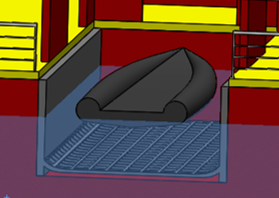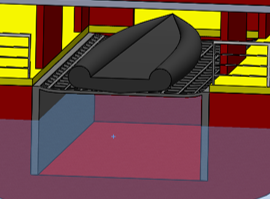Dr Jon Downes attended the Maritime Alliance Bluetech week held in San Diego 6th Nov to 10th Nov as part of the UK Government delegation funded by the Foreign and Commonwealth Office Science and Innovation Network. The UK delegation included a wide range of people from UK Government, Royal Navy, MCA, NOC, UK Universities. British Embassy Washington DC, and members of the British Consulate-General in LA.
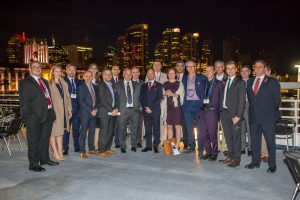
The UK Delegation attending the Maritime Alliance Bluetech Week Dinner
The delegation was visiting San Diego to build UK – US links in the Maritime Autonomous Systems sector as San Diego is home to a number of developing companies and universities. A packed week of meetings and visits ensued – visiting Scripps Institute, SPARWAR, and Coleman University Hornets Nest as part of the week. A key part of the weeks activities was the Marine Autonomous Systems UK-US Collaborative Opportunities workshop with approximately 70 attendees and a report on the discussions is expected to be made available during 2018.
The delegation attended the Maritime Alliance demonstration day witnessing some of the autonomous platforms currently under development in the US. These included the WAM-V unmanned surface vessel cooperating with underwater and aerial platforms.
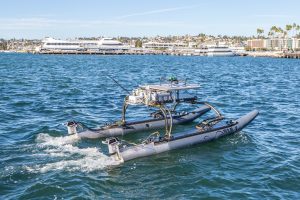
Thanks to the dedication and hardwork organising this event of David Pasquini, Nick Hooper, Natalie Hatour, and Pauline Wood of the British Consulate-General in LA, this was an excellent opportunity to build links both internationally with the USA and also within the UK Delegation itself. Some final hours were used to visit the aircraft carrier USS Midway.
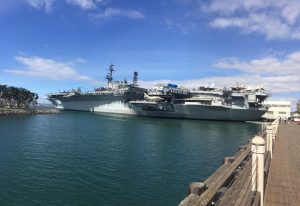
Monthly Archives: December 2017
Maritime Careers
Ship Science and the University Careers and Employability Service recently held the 1st Maritime Careers Event. This was hosted on the Boldrewood campus with many companies stands and talks being given.
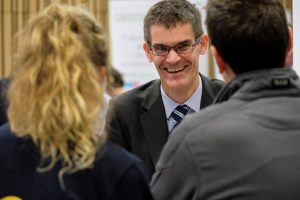
The event was well attended by 120 students from Ship science, other engineering disciplines, and maritime law during the day. Feedback from both employers and students has been very positive and we hope to be able to hold the event again next year so watch this space!

Companies attending and most of whom gave presentations included: Babcock International Group, BP, Cammell Laird, Fugro GB Marine Ltd, Griffon Hoverwork, LOC Group Ltd, LR, QinetiQ, Shell, Sonardyne, Steller Systems Ltd, Tadek, Wartsilla UK Ltd. Many of whom sent recent (or not so recent) ship science graduates!
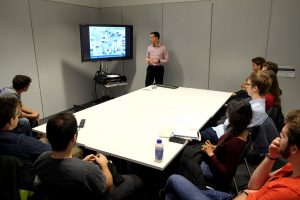
Ship Science students form part of winning concept design team
The Western Joint Branch of the Royal Institution of Naval Architects (RINA) and the Institute of Marine Engineering, Science and Technology (IMarEST) Design Challenge 2017 was won by a University of Southampton team comprising of two Ship Science students and a Mechanical Engineering student. The team of three met whilst working as interns at BMT in Bath during the summer. They struck up a friendship and decided to enter the competition.
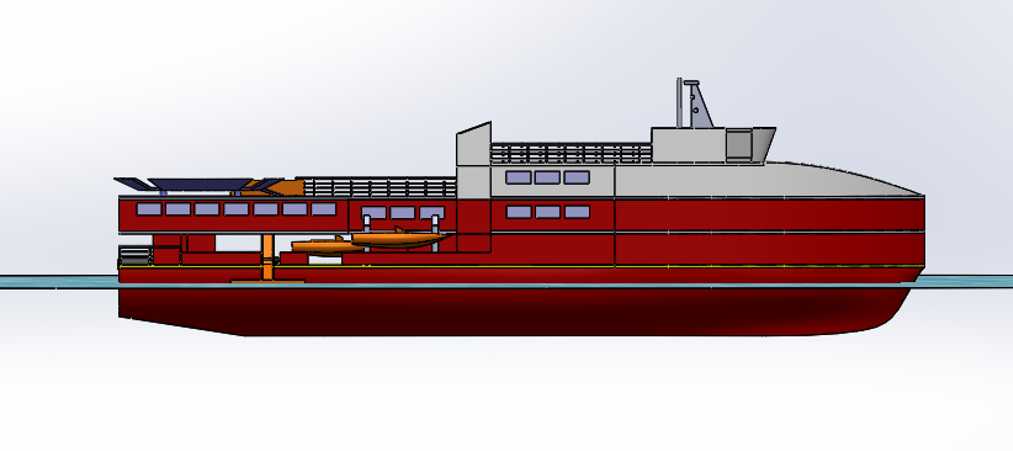
The design brief was to design a life boat capable of rescuing up to 1000 people from the sea at once, in response to the migrant crisis in the Mediterranean. “Team Wessex” was made up of James Lamyman (Part 2 Ship), Edward Wilson (Part 4 Mech) and Paloma Medina (Part 4 Ship) who was the team leader. Their mentor was Paul Nichols from Lloyd’s Register. The competition involved preparing a Poster and presenting their design concept at an event held on the 4th December at the University of the West of England.
“Team Wessex” were crowned champions from a group of 6 entrants, two from BMT, one from each of SSMG, Stellar Systems, MoD DESG and “Team Wessex”, who walked off with the £1000 first prize.
Paloma said “Sometimes it was challenging to combine University work and the lifeboat design work but we learned a lot from it and it was worth it. It was like doing a second concept design.” Part 3 Ship Science students do a concept design as part of their degree.
The entry from “Team Wessex” was a 65m monohul with various innovative rescue capabilities:
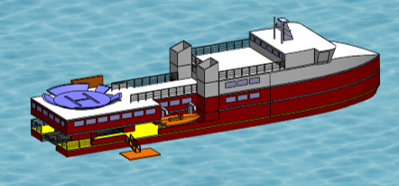
- It can seat 1000 people
- The vessel concept includes a well deck at stern for rescuing the ribs in which refugees tend to travel or collect the boats rescue ribs when they carry rescuees.
- Two high speed ribs at both sides launched,
- Side platforms which can be lowered to the water for rescuing purpose
- Vessel design integrates a processing system for rescues.

